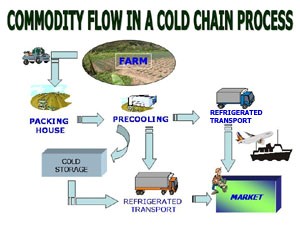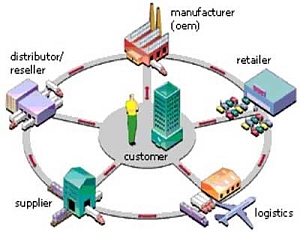A quick guide to Supply Chain Management
0
Supply Chain Management is basically broken down into two main concepts.
Supply Chain: To begin, every physical item that is purchased by the consumer goes through numerous channels to reach its end destination. For example, an everyday item such as Cow’s Milk, starts the supply chain process at the Dairy Farm and a sequence is then followed to allow the product to reach the retail outlet ready for consumption (see diagram). This procedure consists of multiple companies each playing their own part in the supply chain. The farmers to the milk hauler, the processor to the inspectors/testers before reaching the retailer.
 Secondly, Supply Chain Management: This description refers to the organisation of the supply chain process which allows maximisation of consumer value and the ability of attaining a viable competitive stance within the market. All companies involved in the development of the supply chain procedure are mindful of introducing techniques that enhance and fulfil the process ensuring the most sustainable methods are utilised and further developed. The term supply chain covers all aspects from the manufacture and development of a product to product sourcing, production and logistics.
Secondly, Supply Chain Management: This description refers to the organisation of the supply chain process which allows maximisation of consumer value and the ability of attaining a viable competitive stance within the market. All companies involved in the development of the supply chain procedure are mindful of introducing techniques that enhance and fulfil the process ensuring the most sustainable methods are utilised and further developed. The term supply chain covers all aspects from the manufacture and development of a product to product sourcing, production and logistics.
In order to achieve a resilient, sustainable supply chain, companies must work together using collaborative approaches. Problems with innovation, effectiveness, skill gaps as well as the economics of the business, need to receive full attention to ensure the complete supply chain benefits.
Considering the necessities and challenges involved in the supply chain, you could be forgiven for doubting if the pursuit of SCM capabilities is worthwhile. To the point, yes it is, due to the fact that companies depend on resilient supply chain competencies to successfully compete within their particular marketplace. The main aims for SCM should be to accomplish resourceful fulfilment of demand, determine outstanding consumer value, augment organisational receptiveness, build network pliability and aid monetary success.
 To sum up – SCM is the control of resources, data and cash as they channel their way from supplier all the way through to consumer. All corporations involved need to synchronise and integrate the movements to ensure the process is streamlined. To attain an efficacious SCM system the desired result is to diminish stock levels whilst upholding availability. Companies involved in the supply chain process are now starting to incorporate innovative software systems with Web interfaces to run alongside, or indeed, replace the original Web-based application service providers (ASP) as a way of augmenting the future of the supply chain lifecycle.
To sum up – SCM is the control of resources, data and cash as they channel their way from supplier all the way through to consumer. All corporations involved need to synchronise and integrate the movements to ensure the process is streamlined. To attain an efficacious SCM system the desired result is to diminish stock levels whilst upholding availability. Companies involved in the supply chain process are now starting to incorporate innovative software systems with Web interfaces to run alongside, or indeed, replace the original Web-based application service providers (ASP) as a way of augmenting the future of the supply chain lifecycle.
Bio: The Whichwarehouse network consists of third party logistics providers who can assist companies with their supply chain requirements offering services such as (but not limited to) the receipt, handling, storage and distribution of their products ranging from foodstuff, chemicals through to merchandise.

